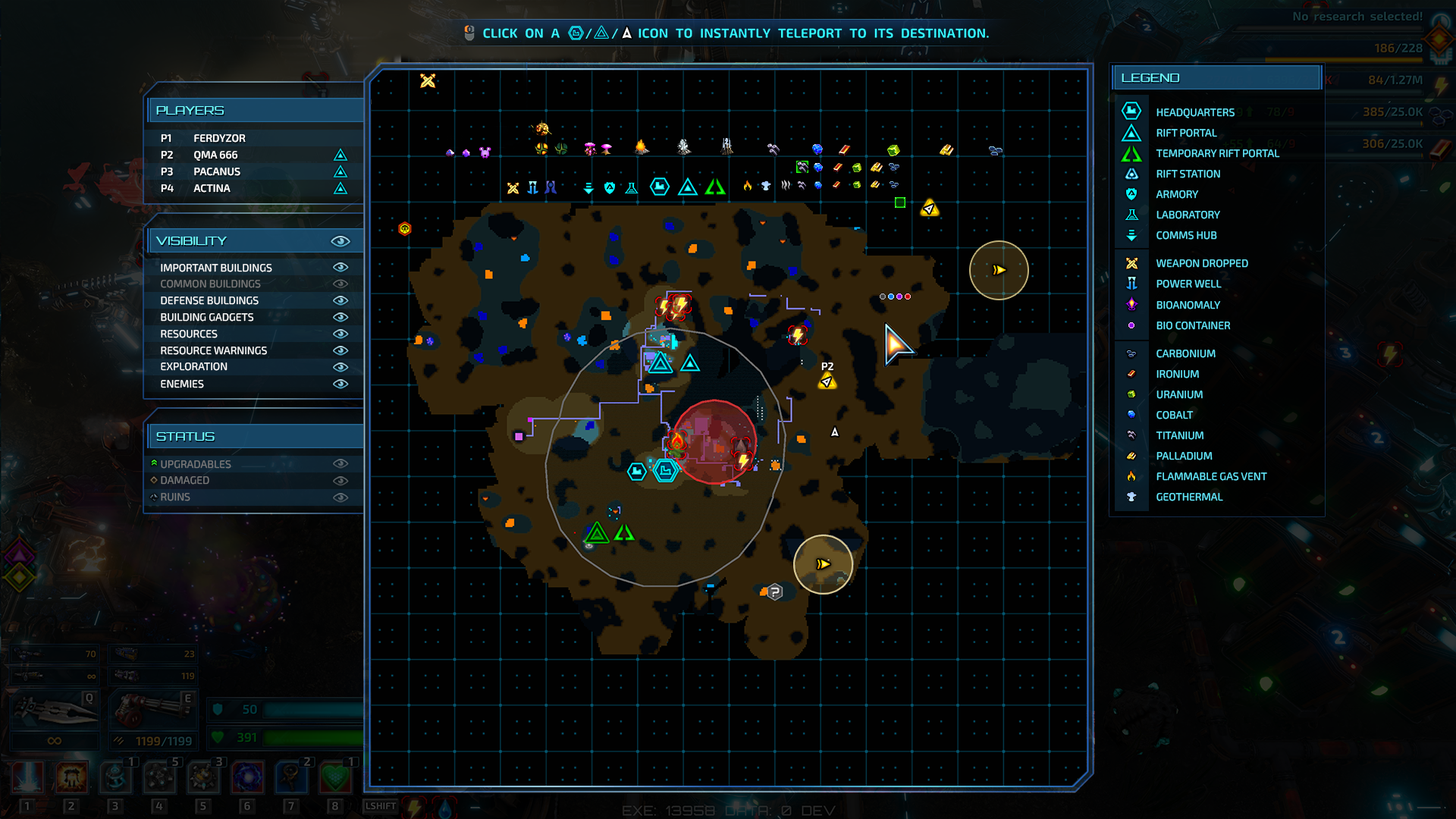
Oct 28, 2024
The Riftbreaker - voidreaver
Hello Riftbreakers!
After the release of World Expansion III for The Riftbreaker and the Heart of the Swamp DLC, we got to work on the Endgame update. It is going to be extensive - so extensive, in fact, that we have started referring to it as The Riftbreaker 2.0. This update allows us to implement what we learned over the years to improve the game. A lot of these changes are going to be functional, but there are still other areas where we can improve. One such area is the design of boss creatures, which did not stand out from the crowd. We have already talked about the functional changes and the new features we intend to give our boss creatures. Today, however, we will focus on the visual aspect. Our artists have been working on making these creatures extra special. Let’s see how they’re doing.

We have been using regular creature models as a base for our boss system prototypes. They work fine for our use case, but they can always be better. This is why we decided to give our bosses a rework.
Up to this point, the boss creatures in The Riftbreaker appeared sporadically during randomized side objectives. They could also be met as Bioanomaly “guardians,” spawning around the battlefield in certain biomes after activating a Bioanomaly. Additionally, Survival players could meet them on the highest difficulty levels during the final attack waves. Initially, we planned to have way more variety among our bosses, but due to time constraints, we couldn’t see all our plans to completion. This also means that in most cases, our “boss” variants are simply scaled-up ultra strains of Galatean creatures with a special texture, which is also one of the reasons why we didn’t show them off more often.

Adding special abilities like the Necrodon's resurrection and creature spawning worked well gameplay-wise, but we wanted more.
On top of all that, we didn’t have a real name for them. Sometimes, we referred to them as elites; other times, they were bosses or guardians. This changes today. Our most powerful creatures are the Omega strain. As we described in one of our previous articles, the Omega strain will receive a functional overhaul, receiving a set of abilities that will make them stand out against the crowd. The frequency of their attacks will also increase, both in Campaign and Survival modes, giving you an opportunity to test your skills, equipment, and the defensive setup of your base. Get ready for a new level of challenge!
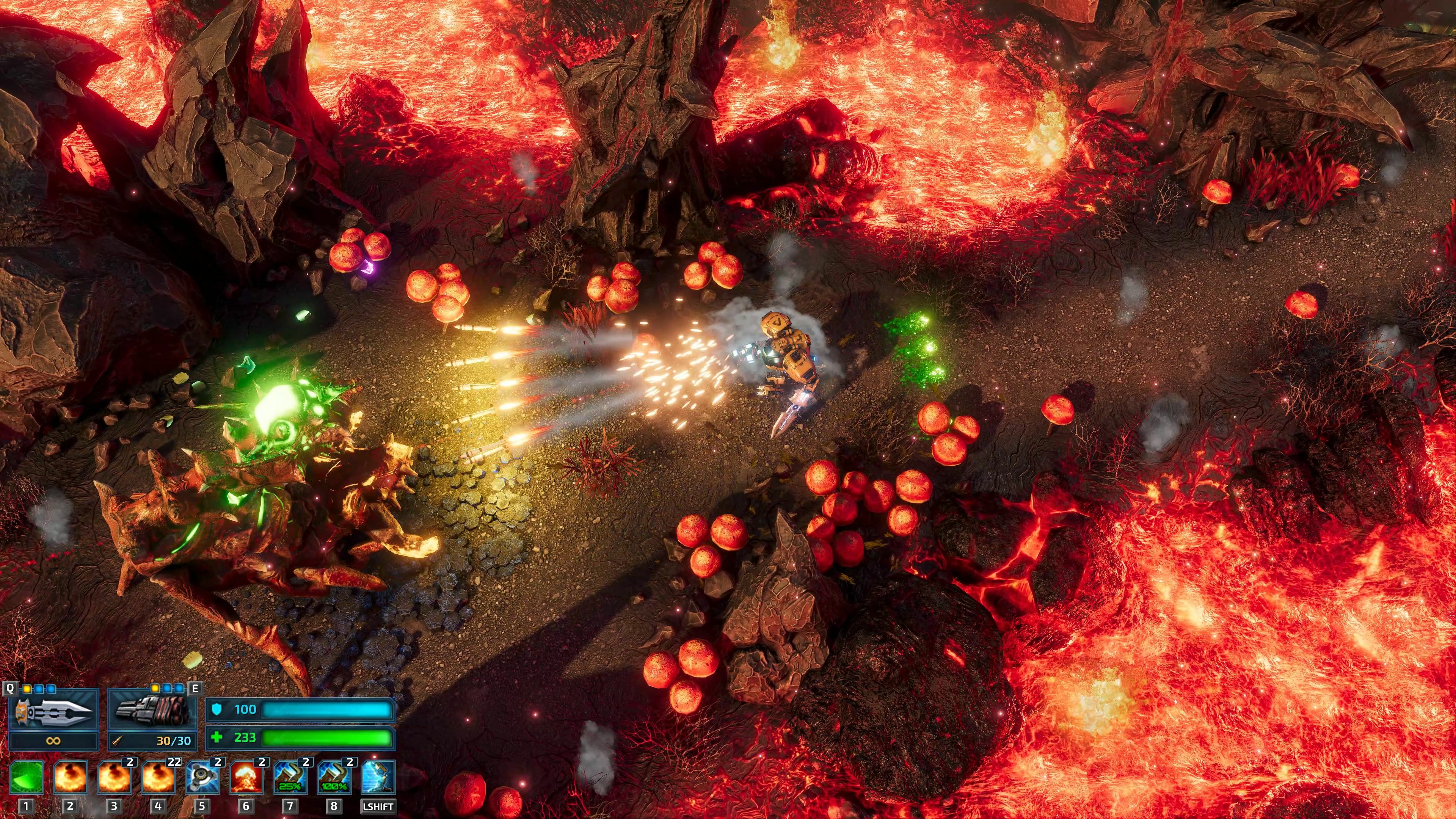
The Arachnoid Boss was larger and looked more menacing than its regular counterpart. We wanted to emulate that for other creatures as well.
Previously, only the Arachnoid Boss got a different model for its boss variant. If you compare the Ultra strain to the boss creature, you can see distinctive differences in the body shape. The boss’ head is adorned with large horns, making you feel that it is the leader of the swarm. The creature’s body is also protected by layers of thick carapace, which breaks off piece by piece as you fight the boss. We decided to give similar treatment to the new Omegas we are working on, following a couple of rules. Each Omega will have unique features that set them apart from regular creatures, making them instantly recognizable.
- The creature's anatomy must remain relatively the same—no extra limbs or chainsaws sticking out of the forehead. This allows us to use the same skeleton for animation purposes and saves us days of additional work.
- No simple re-coloring. The Omega must be recognizable next to a regular creature, even if it were the same size. Adding features like spikes, horns, or protruding flesh is the way to go.
- Since we wanted to create an Omega variant for every major damage type in the game, the designers were also requested to prepare elemental versions for each creature. There are a couple of individual exceptions.
- Optional—if possible, don’t work on models you originally created. Switching models between artists provides a fresh look and innovative ideas.
The first step in our workflow is sculpting a draft version of the model. We call it a blockout. It is not made literally from blocks but uses simple shapes to convey the general direction the artist wants to follow. Artists don’t spend any time adding details since blockouts are meant to be discarded or used as a base for the final model at best. This time, however, our artists didn’t have to start from scratch and used the existing models as their canvas. This allowed them to save a lot of time and start with the improvements right away.
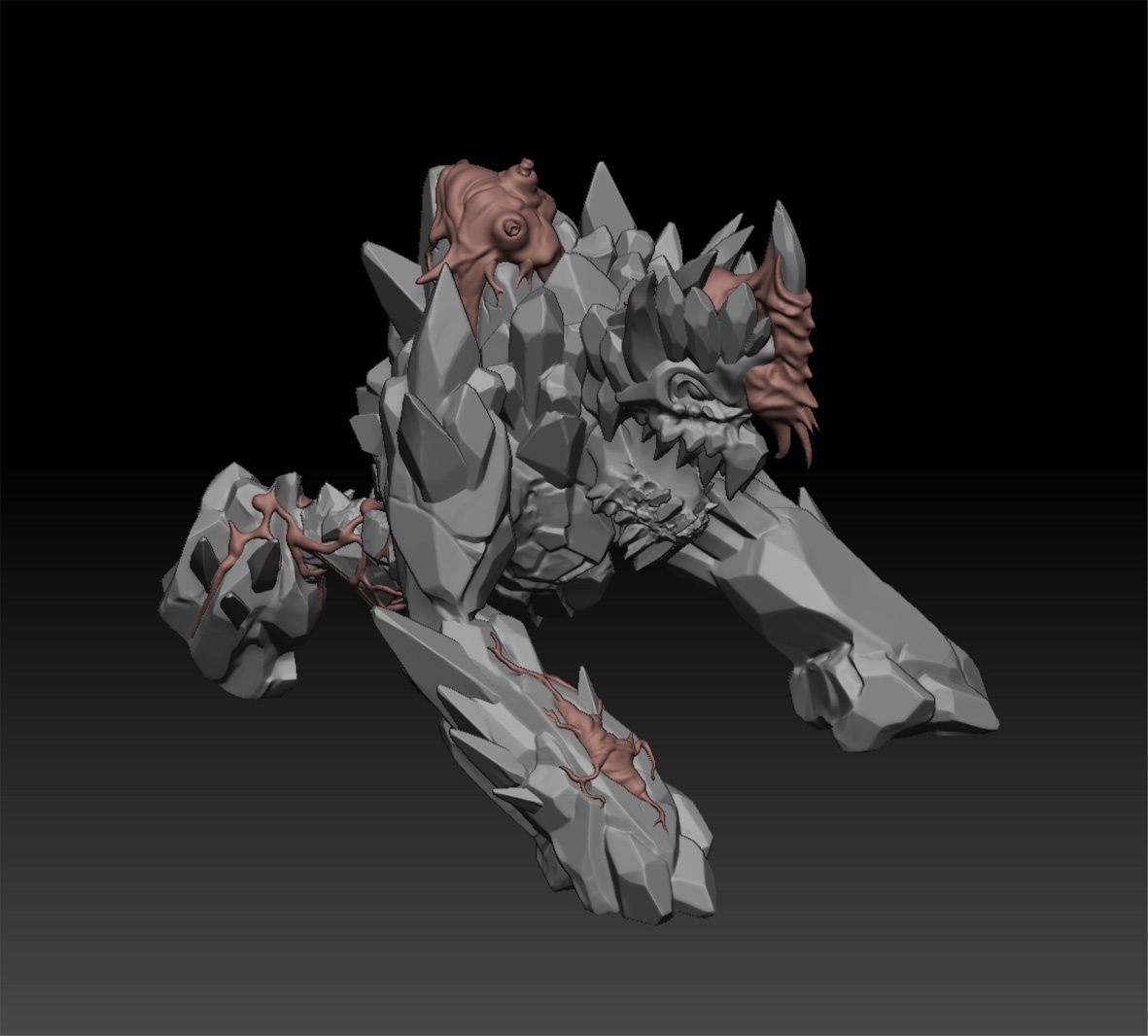
This is the proposed idea for the Krocoon Omega strain. Its armor features much more aggressive styling. Additionally, you can see strange, flesh-like corruption taking hold of its body.
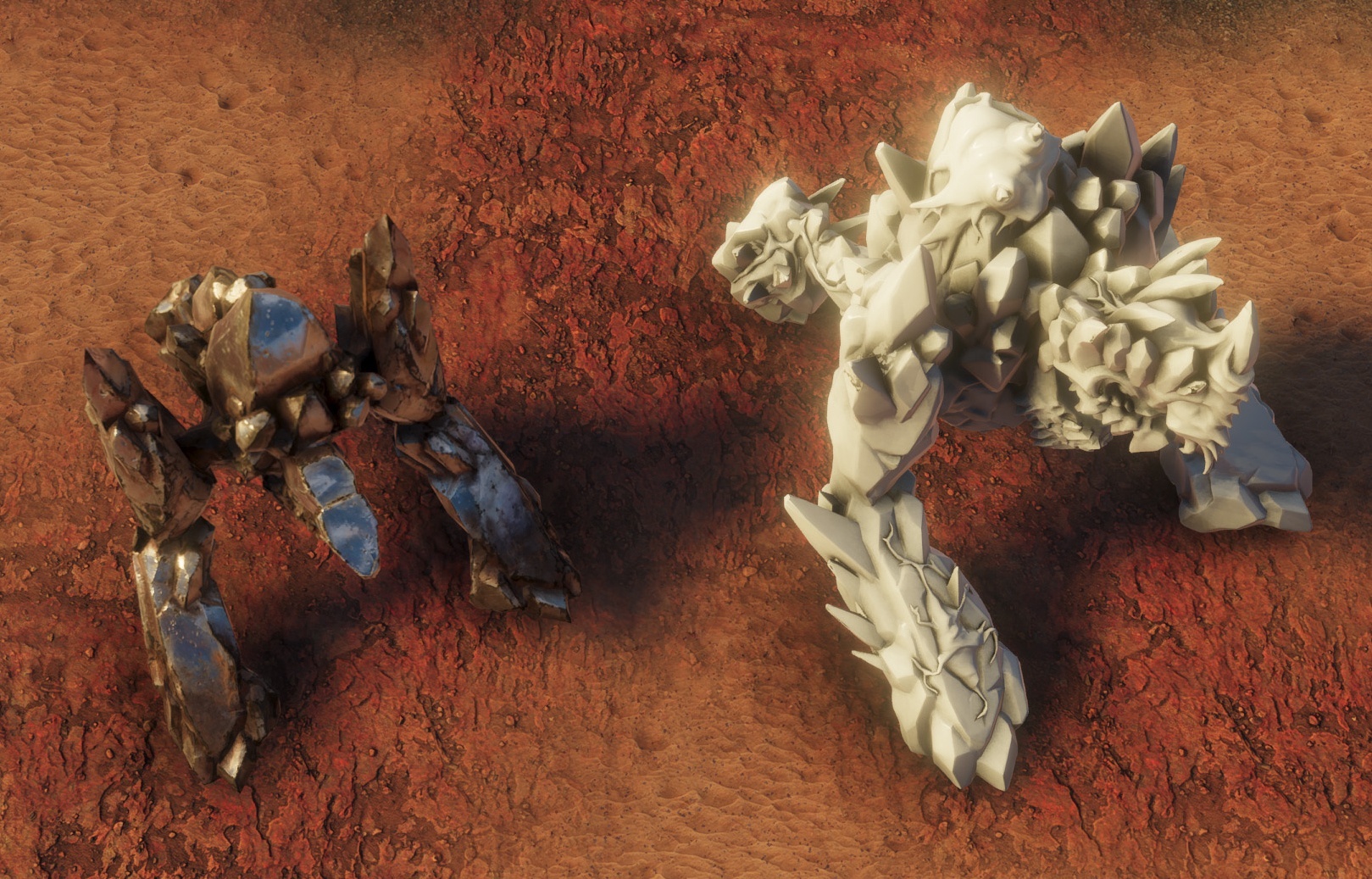
Krocoon Omega on the right, compared to the regular version on the left. We were happy with the differences between them, so we moved on to texturing.
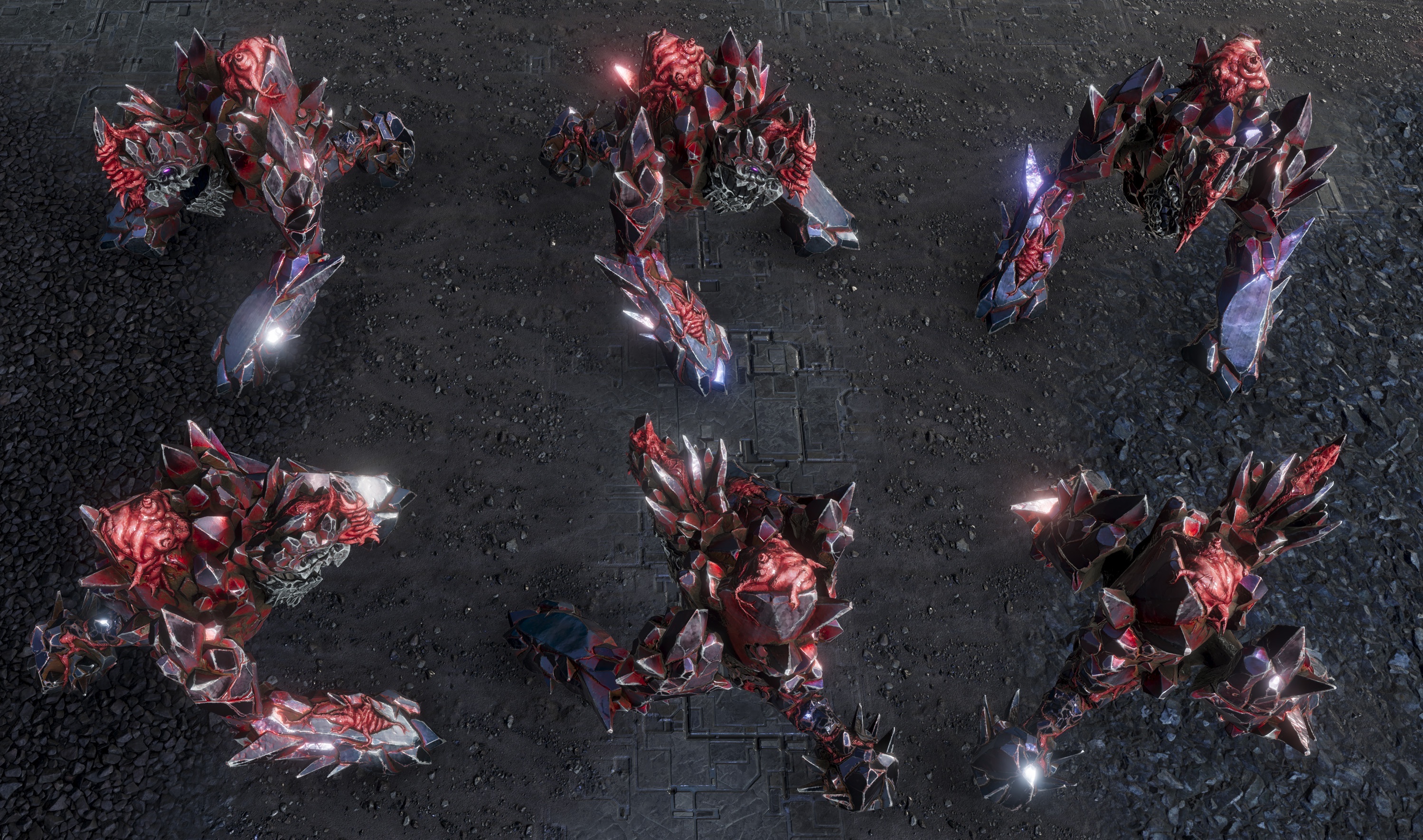
The first textured version of the Omega. Our artist suggested giving the entire body a red tint, but we felt that it sugggested that the creature's body is made of flesh. It is not. The flesh growing on the Krocoon is an intruder, and we wanted that to be clearly visible. We made the decision to stick with the original color.
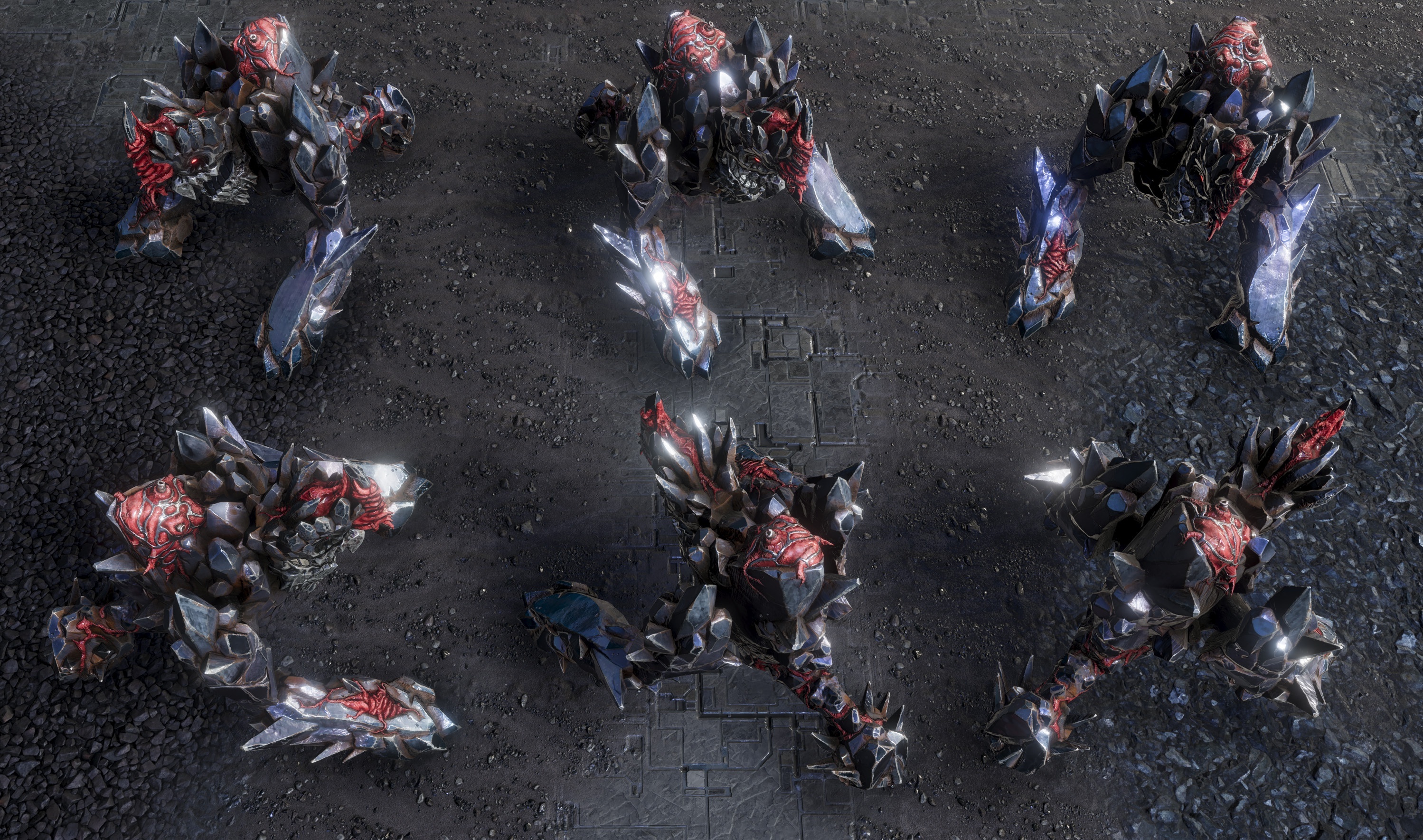
The final version of the Krocoon Omega. Clearly distinct from the original, but at the same time it is unmistakably still a Krocoon. This is precisely what we were aiming for.
Our graphics designers decided to try to focus on one aspect of the creature’s physique they would change. This way, they could make the new models instantly recognizable and resist the urge to let the creativity flow and remodel the creature entirely. Pictured below are a couple of blockouts from this process. We use these pictures for the initial round of feedback within our team. When everyone is happy with the general idea, the artist can move on and breathe life into the creature by creating a detailed, high-poly model.
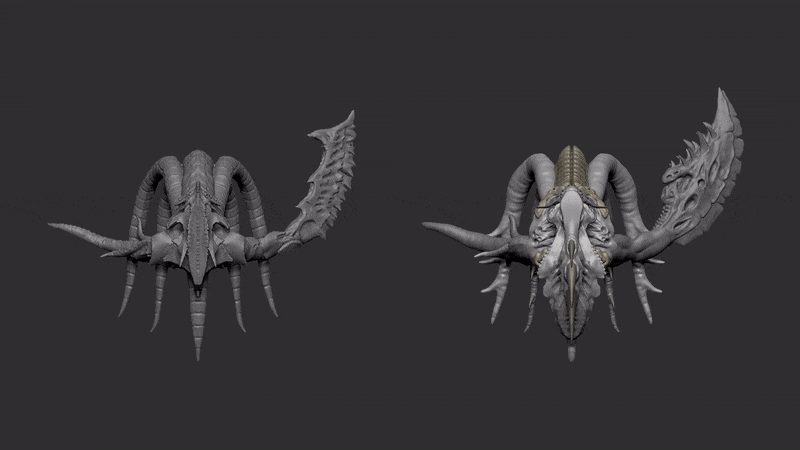
Now let's compare the regular Phirian and its Omega counterpart. In this comparison the scale of the models is the same, which is not accurate, but enough for preview purposes. The changes in the body and armor are highlighted with a different color material.
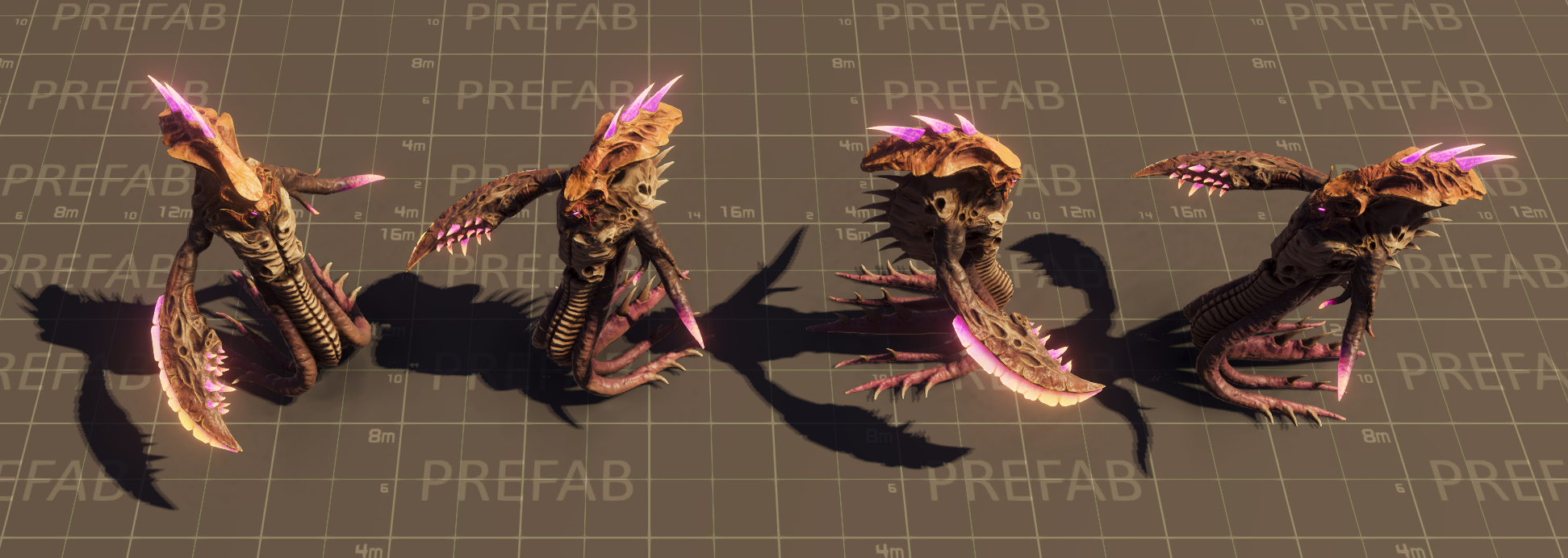
The first version of the texture. Taking inspiration from the color palette of the Fungal Swamp biome, the Phirian Omega is rocking a neon-pink mohawk. Since the creature also appears in other biomes, we decided it was not the best choice and asked for a less flashy version.

This is the version we landed on for the baseline Phirian Omega. The yellow tint still screams 'danger,' but the creature can now blend with the environment of other biomes much easier.
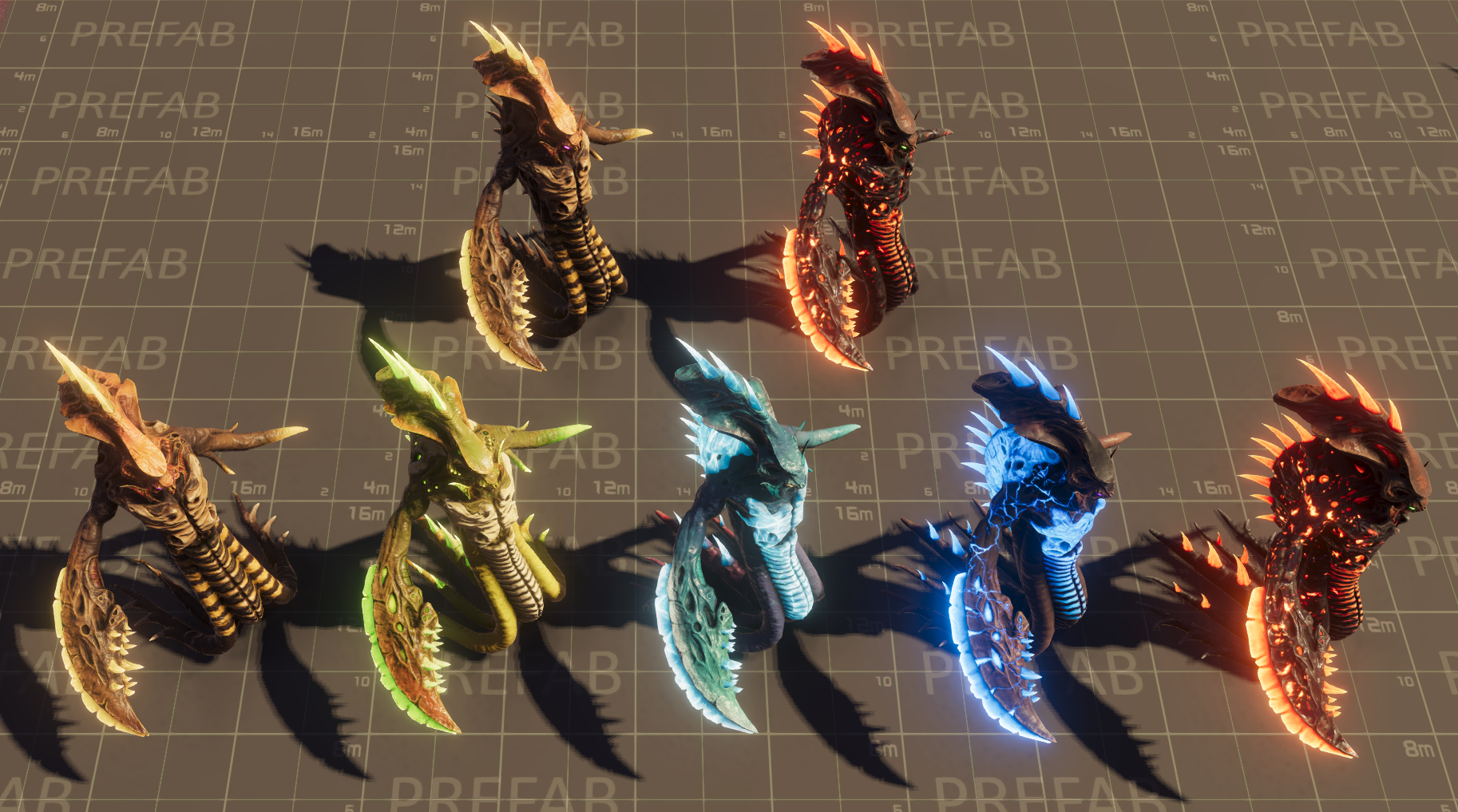
The full family of Phirian Omegas. Please take note that these are just the creature models with their textures. The elemental versions will have some additional particle effects attached.
After the initial blockouts had been approved and turned into detailed sculpts, it was time to create the new textures. As mentioned previously, we wanted each Omega to appear in several flavors. The first would be the baseline variant. These creatures do not get any additional damage resistances that need to be highlighted, which leaves room to showcase their individual quirks and features. Stregaros became a brain-crab-demon that would fit without any issues on the Doom Slayer’s victim list. Krocoon started showing some fleshy parasitic growth on top of its metallic body. Phirian leveled up and got an epic hand blade and armor.
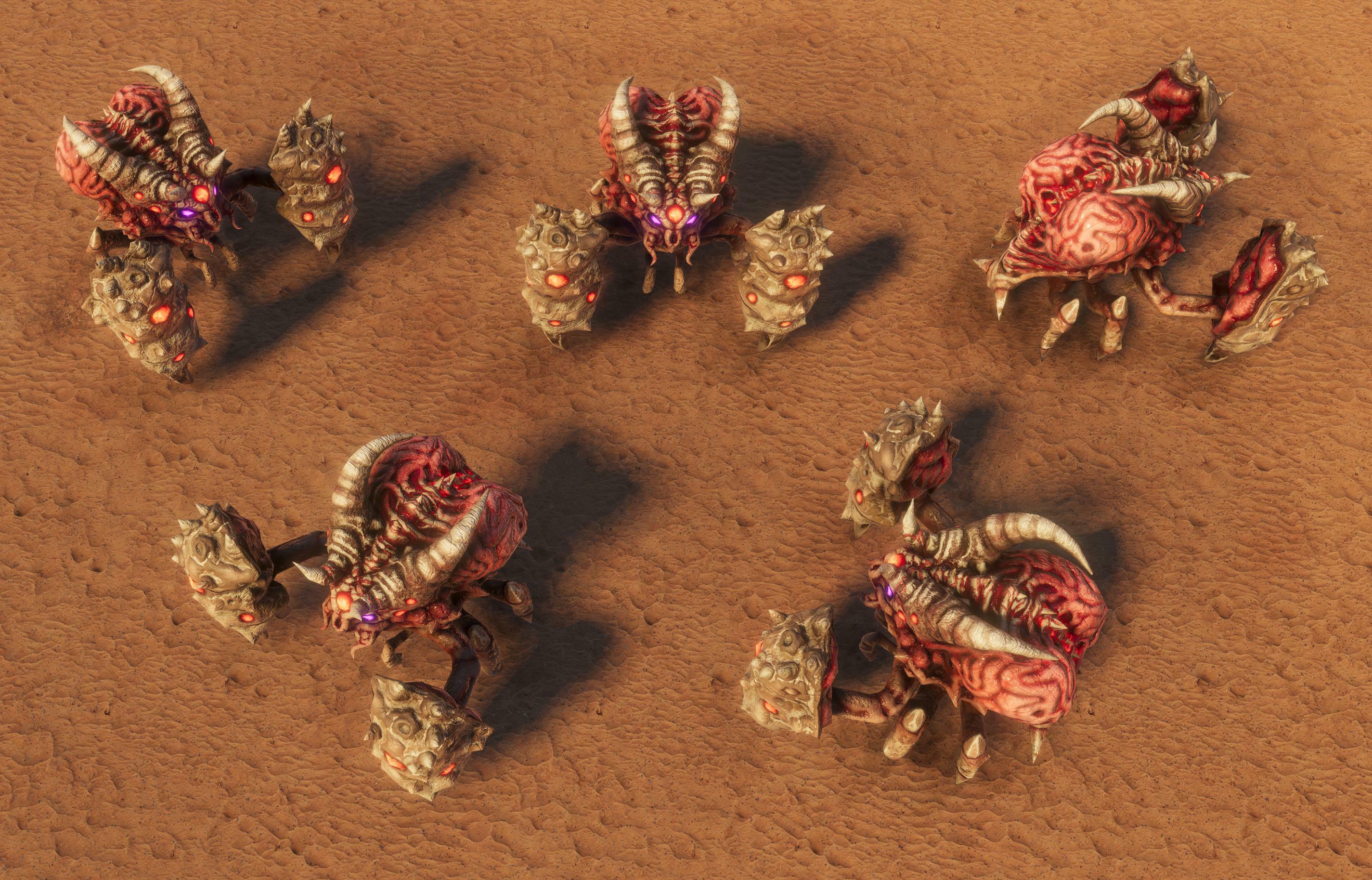
A personal favorite of mine - a very smart Stregaros Omega. Because more brain = more smart, obviously!
The last step was creating additional texture variants for the elemental version of these creatures. Some of our Omegas gain protection from one of the damage types present in The Riftbreaker. We wanted you to be able to tell which resistance type the creature got in an instant. For that reason, the elemental variants feature significant amounts of emissive textures, which are really easy to spot. Apart from that, we made sure to add details that align with the creature’s “home” element. The ones with protection from fire damage are singed and covered with ash. Cryo-resistant creatures look as if their body parts were made out of ice. Acid Omegas seem to be dripping poison everywhere they go. This attention to detail is what makes the difference between a reskin and a rework.
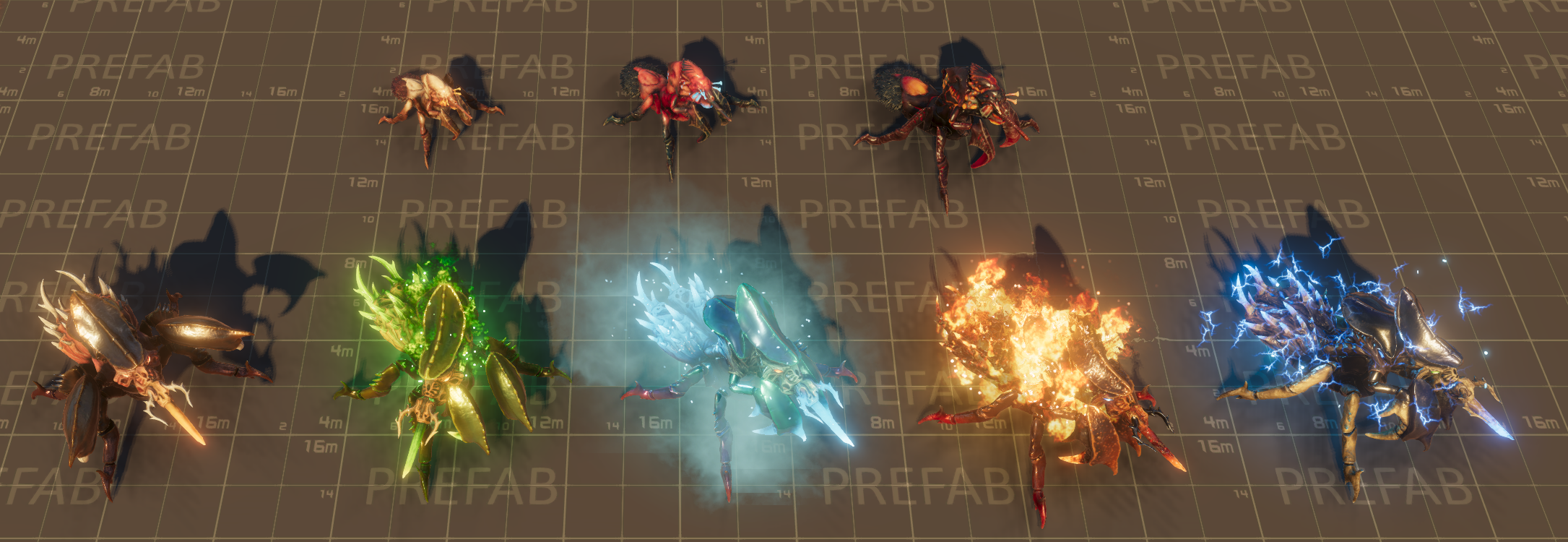
Nerilian Omegas of various flavors at the bottom, with the regular, Alpha and Ultra variants at the top for comparison. We're very happy with how this creature turned out!
Improved Omega-class creatures will make their way into the base game, along with our endgame expansion, where they will play a significant role in the combat challenge. Get ready - they won’t be easy to defeat!

Some new Omega variants are already in the game. Others will join them very soon.
Join our Discord at www.discord.gg/exorstudios and our streams at www.twitch.tv/exorstudios for exclusive sneak peeks at new features.
See you there!
EXOR Studios





